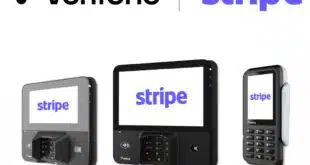The future of digital payments is being created now with the adoption of contactless payments, new digital transactions such as buy online, pick up in store, and reduced friction within the payments ecosystem. That’s the assessment in the “Future-Proof Payments: From the EMV Chip to a Fully Digital Future” report released by Aite Group LLC.
The report, prepared for the Electric Vehicle Charging Association, a Sacramento, Calif.-based nonprofit, lays out how EMV chip cards, introduced widely beginning in 2015, followed by new point-of-sale terminals equipped to accept chip cards and near-field communication (NFC) contactless payments, formed critical parts of the payments infrastructure.
Consumers began to take full advantage of these technologies—contactless cards only accounted for 19% of cards in force in 2019—in 2020 as the Covid-19 pandemic spurred greater contactless payment use. It’s estimated 52% of cards will have contactless capability by 2021.

Consumers also adapted by turning to e-commerce for more of their purchases, such as groceries and other household items. Many began making purchases online to pick up in stores or at curbside. “Buy online, pick up in-store (BOPIS) has become a pandemic staple, as has delivery to customer cars outside stores—buy online, pick up at curb (BOPAC),” the report notes.
“Contactless/touchless payments are accelerating new acceptance capabilities in the U.S., but in many markets around the globe, contactless was already a prevalent, if not dominant payment capability,” Thad Peterson, Aite senior analyst and report author, says in an email to Digital Transactions News. “Touchless commerce will be an increasingly large component of payment acceptance going forward.”
But the future of payments will have to do with more than contactless payments or form factors. “Organizations designing ‘future-proof’ payment-acceptance capabilities should assume that digital and contactless payments will be the dominant payment alternatives in 2030,” Peterson says in the report.
“Contact chip and mag stripe will remain on some older point-of-sale terminals, but few transactions will be conducted that way. The vision for a robust and secure payment capability in 2030 will be a secure digital payment platform coupled with a digital wallet or a contactless card that can enable payments wherever they need to be made. The distinction between physical and virtual transactions will disappear.”
This transformation will have implications for the acquiring industry. “Merchants need to be able to sell to any customer with any tender type from any payment node, and soon, anywhere in the world,” Peterson says. “Acquirers and processors need to architect their platforms to enable a variety of different payment types and acceptance nodes in the future.”





